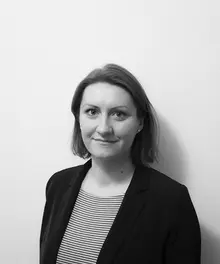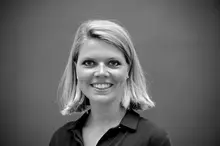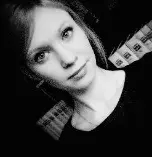Johanna Rosenzweig M.A.
Why study art history (in Bamberg)?
In the 2010/11 winter semester, I enrolled at the University of Bamberg to study art history as my major subject and heritage conservation and European ethnology as my minors. What made me choose Bamberg was above all the unique combination of art history and heritage conservation, which is reflected not only in the academic offerings but also visually in the cityscape and can thus also be experienced practically. Even when I was little, I was fascinated by art and churches, so I made up my mind early on concerning the subjects I would one day like to study at university.
During my studies, I worked as a graduate assistant at the department and was allowed to give the “Visual Arts Tutorial”. After submitting my master’s thesis in 2015, I had the opportunity to work as a research assistant at the Chair for Medieval Art History in a project funded by the German Research Foundation (DFG). During that project, however, I realised that I would rather work in a practical capacity, and I was fortunate to quickly find a traineeship position at Städtische Sammlungen/Coburger Puppenmuseum in Coburg. There I could use all the experience I had gained during my studies. Specifically, I benefited from the experience I gained from various internships I did in the semester breaks at different museums and cultural institutions. During my traineeship, I was allowed to design and curate my own exhibition. I gained experience in museum education and deepened my knowledge of the inventory process. During my traineeship, the Coburg Municipal Office for Schools, Culture and Education advertised the position of Head of the Culture Department, for which I applied and eventually changed jobs. Until my parental leave, I worked full time on a permanent contract as Head of the Culture Department; today, I am the part-time deputy. At first glance, this job hardly has anything to do with my studies, but in fact there is a lot of overlap. My work ranges from cultural management to administrative tasks in the areas of theatre, museums, classical music, art, and urban culture. The versatility of this job has presented me with new challenges, but the position clearly has nothing to do with classical museum work. However, studying art history has enhanced my ability to look at things critically and to question them, to look left and right, and to embrace a broader concept of art and culture.
Since early 2020, together with my husband, I have been the art officer for the Protestant church district of Bayreuth, which is an excellent opportunity to contribute my academic experiences and to combine art and church once again.
Another reason why I am happy to have chosen Bamberg as a place to study is that I met my doctoral supervisor here, Prof Dr Christian Hecht, who supervises me as a Friedrich-Alexander-Universität professor. It was during one of the many exciting excursions that were part of my studies, at Museum Georg Schäfer, that I became aware of a key work for my doctoral thesis, which I am currently trying to write alongside work and childcare. In my opinion, practical relevance is essential when studying art history and is always encouraged by our instructors. The two major excursions to Paris and Rome, for example, are lasting and pleasant memories for me. Where better to learn from the object than in these two art metropolises?
I would always choose this subject again, and especially the programme in Bamberg. To me personally, the stand-out features of studying art history in Bamberg include the view from the lecture halls over the old town of Bamberg, the friendly interactions between instructors and students, the possibility of excursions and internships, and the interdisciplinary work between faculties and departments. As with other subjects in the humanities and cultural studies, the job market for art historians is certainly limited, but there will always be opportunities, as long as you are driven by your passion and curiosity for the subject and willing to continue your education.



